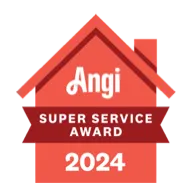Texas Fence Guide Glossary
Has a fence ever caught your eye because of the way it looked? Have you ever wanted a fence with a special design or feature but didn’t have the words to describe it? Or do you just love fences like we do?
Congratulations! You are in the right place. We’ve outlined a handy glossary of common fence design and construction terms so that you can speak about your fence, and other fences, with authority— and get the fence you want. So hold on to your batten boards, stay posted, and you will have the foundation necessary to understand your fence and the interesting fences you see around town.
Wood‑Fence Terms
Pickets
The vertical boards—usually cedar or pine—that make up the face of a fence.
Posts
The vertical supports set in concrete—terminal (end), corner, or line (middle).
Rails
Horizontal pieces that connect posts and hold pickets in place. Commonly top, bottom, and sometimes a middle rail.
Rot Board
Also called a bottom board—runs along the bottom to keep moisture from rotting the pickets.
Post Caps & Finials
Caps are simple covers to keep water out of posts; finials are decorative tops for iron/aluminum pickets or posts.
Grades (Wood Quality)
- Clear Grade: No visible knots.
- #1 Grade: Few knots.
- #2 Grade: Industry standard—may have knots.
- #3 Grade: Lower quality.
Stain
Colored finish that protects wood while showing its natural grain.
Pressure‑Treated Pine
Wood treated to resist rot and insects—great for posts.
Cedar Fence & Western Red Cedar
Durable, insect‑resistant, and ideal for humid climates like Houston.
Wood‑Fence Styles
Privacy Fence
Tight pickets with no gaps to block visibility.
Shadowbox Fence
Alternating pickets on each side so it looks good from both sides.
Good‑Neighbor Fence
One 7-ft section is pickets‑out, next section is pickets‑in. Even look for both neighbors.
Scalloped Cedar Fence
Pickets are different heights to create a curved top edge.
Horizontal Picket Fence
Boards run sideways—modern, popular style.
Lattice
Criss‑cross wood panels added at the top or bottom for decoration or airflow.
Ranch Style Fence
Open‑spaced boards—mostly for livestock or rural plots.
Curved‑Top / Extended‑Top
– Curved‑Top: Pickets or rails gently curve along the top.
– Extended‑Top: Pickets rise above the top rail in a straight line.
Iron & Aluminum‑Fence Terms
Flat‑Top Fence
Pickets stop at the top rail—clean, straight edge.
Extended‑Top Fence
Pickets extend above the top rail (flat line or pointy).
Curved‑Top Fence
Pickets form a curve—soft, elegant look.
Press Point
Pickets topped with spear shapes.
Finials
Decorative spearheads (Triad, Fleur‑de‑lis, etc.) on each picket.
Decorative Rings
Metal rings added between pickets for style.
Prefabricated Iron Panels
Factory‑built & coated panels—less welding on site.
Rackable Panels
Panels that can angle to follow a slope, while keeping pickets vertical.
Chain‑Link Fence Terms
Chain Link
Diamond‑pattern woven steel. Affordable, see‑through.
Gauge
Thickness of the wire. Lower gauge = thicker wire (more tough).
Galvanized / Aluminized Steel
Zinc- or aluminum-coated to resist rust—critical for coastal climates.
Vinyl‑Coated
Steel wire coated in colored PVC—safer and more attractive.
Privacy Slats
Plastic inserts woven into the chain to block visibility.
Wind Screen
Mesh fabric that blocks wind and prying eyes.
Barbed Wire / Razor Ribbon
Security on top of chain link—deters climbing/escaping.
Terrain & Installation Terms
Fence Line
The actual line where the fence gets installed.
Grade / Grade Change
How you handle slopes:
- Stepping – flat sections like stairs.
- Racking – rails follow the slope.
- Level – top rail stays flat; ground gaps dealt with underpinning.
Underpinning
Boards added at the bottom to fill gaps on uneven ground.
Decorative & Support Features
Cap Top Fence
Top rail that covers the full width—clean finish.
Cedar Batten Boards
Narrow strips added between weathered pickets for privacy.
Pergola / Arbors (Added)
Decorative wooden overhead structures in gateways or entry areas.
Bollards / Fence Post Lighting (Added)
Lighting fixtures mounted on or near posts for property illumination.
Gate Types
- Swing Gate – opens like a door.
- Slide Gate – slides horizontally on track.
- Double‑Swing Gate – two panels that swing open.
Materials & Maintenance
Aluminum Fence
Rust‑resistant, lighter than iron—good for yards by the coast.
Cedar Fence Maintenance
Inspect yearly, re‑stain every 2–3 years, replace rot boards when needed.
Fence Painting/Staining Tips
Always stain after installation. Let wood dry first, apply 2‑3 thin coats.








